A conversation between an anesthesiologist and an animal owner
Опубліковано
20.07.2023
A conversation between an anesthesiologist and an animal owner
The number of pets is growing every year, and most of them face the need for anesthesia or sedation at least once in their lives. Naturally, owners have many questions and concerns about this. Is it true that anesthesia is dangerous to the life and health of pets? Can a 20-year-old cat be anesthetized? Are there any breeds that do not tolerate anesthesia? Let's find out in this article.
"The most common causes for concern: risk of mortality, drug reaction, separation from the pet, behavioral changes, adequacy of anesthesia, and the "harmfulness of anesthesia"
First, let's find out what owners are most concerned about anesthesia. Most of them are worried that their patient might die. This is understandable. Obviously, this is the worst thing that can happen. The second place is taken by the fear of a reaction to anesthesia drugs. This is due to the widespread belief that some breeds are hypersensitive to anesthetics. And everyone has heard of allergies and anaphylaxis. Also, owners often worry about how the pet will endure separation from them, and what will happen to it
will happen to them at home after discharge. Behavioral changes are third on the list of reasons for worry. Sometimes owners are worried about nausea, pain, or discomfort after surgery. This is a frequent complication and it receives a lot of attention in humane medicine. Obviously, our four-legged friends are no exception.
And of course, everyone is concerned about anesthesia itself, as something mysterious that happens behind closed doors, shrouded in secrecy, and very harmful. What is really worth worrying about?
Let's talk more about each point.
"According to statistics, healthy animals with ASA 1-2 status have a very low risk of mortality, though not zero"
To begin with, any intervention in a living organism cannot be considered absolutely safe. The risk of death during anesthesia depends on many factors.
What are these factors? Well, first of all, it is the severity of the general condition. Let's look at the statistics. In general, according to statistics, anesthesia-related mortality, that is, the number of patients who die during or after anesthesia, for dogs is about 1.7 per 1000. For cats, the number is slightly higher, 2.4 per 1000 patients. Now let's see how ASA status (physical status depending on the severity of the general condition, from 1 to 5) affects the risk of death. In healthy dogs (ASA 1-2), the risk is approximately 0.05%, and in cats, 0.1%. These are the same animals that are admitted for scheduled surgeries, they do not have any systemic diseases, such as heart, kidney, liver, gastrointestinal tract, etc. So, this is a fairly low rate, less than one patient out of 1000.
Obviously, this risk is not zero, but it is very rare in healthy dogs and cats. In cases with a higher status (ASA 3-5), and these are our patients who have some systemic diseases affecting their health, for example, chronic heart failure, congenital heart disease, serious injuries, the mortality rate reaches 0.18-50. %. If a patient is seriously ill, this dramatically increases the risk of anesthesia-related death. This needs to be understood.
"The presence of concomitant diseases, the urgency of the intervention, too small size and overweight are things that make anesthesia more difficult"
The next risk factor is the urgency of the intervention. Here we are talking, for example, about cats with foreign bodies in the gastrointestinal tract, urethral obstruction, or dogs with stomach rotation, car trauma, etc. Every time we anesthetize animals on an emergency basis, the risk of anesthesia-related death increases. Most likely, this is due to the lack of time for a full examination, and we can miss something important. For this reason, this includes aggressive animals. We cannot perform an examination without sedation, and this is fraught with an increased risk of complications. What else affects the risk of death according to the literature? It is weight. Both overweight and underweight are associated with an increased risk of complications.
"Elderly age is not a problem in itself, but it is a reason to conduct a more thorough examination and requires more careful and gentle anesthesia"
These are the main risk factors. But what about age? Studies are contradictory here, with some data showing a link between the risk of fatal complications and age, while others show no connection. Most experts share the second opinion. But of course, the older older a patient is, the more likely he or she is to have concomitant chronic diseases, reduced tolerance to changes in the cardiovascular system, and so on. But old age is not a contraindication for anesthesia.
"Every time we perform sedation or anesthesia, there is a certain risk. In fact, we give a toxin (in a carefully controlled way, of course)!"
Next, we will analyze the reaction to anesthesia drugs. Anaphylaxis is the most insidious complication that cannot be predicted, prevented, or reliably diagnosed. However, there is evidence that only 1 in 100,000 patients had an allergic reaction during the
during the study period. Most adverse drug reactions can be prevented. To do this, it is necessary to take into account the presence of allergies and individual sensitivity to drugs in the anamnesis, to avoid the administration of large doses of anesthetics by combining of drugs and anesthetic techniques. Also, do not forget about breed specifics. There are a number of nuances when performing anesthesia in the following breeds of dogs: boxer, Doberman, greyhound, bulldog, collie, sheltie, etc. Cats include British, Scottish, and Maine Coon, Sphynx, and Norwegian Forest cats have structural changes in the heart that also require careful handling of certain medications.
"Be sure to discuss with the anesthesiologist the pet's personality, unwillingness to shave hair, and other nuances that may affect the anesthesia protocol"
Many clients have a very strong bond with their pets, and they worry about their pet being away from them for any length of time. In fact, most dogs and cats are perfectly comfortable in a hospital setting. in a hospital setting. They are never deprived of attention and care from the staff. If the patient is still afraid, sometimes veterinarians allow them to stay with the owner as long as possible, or resort to prescribing sedatives. It is imperative to discuss all the nuances, including the pet's appearance after the procedure, as this is sometimes very important. From a medical point of view, shaving is a prerequisite for asepsis during surgery, regional anesthesia installation of catheters, etc. And owners often just see a strange and ugly haircut.
How will the cat feel after discharge?
Of course, the possibility that a cat or dog will be unconscious, unable to move or eat is excluded. Animals leave the hospital only if their condition is completely normalized. However, sometimes analgesics cause animals to become euphoric or excitement, which can seriously frighten owners. This effect can be observed during the day. However, if the animal refuses to eat, does not want to walk, breathes heavily, or behaves in an unusual manner, be sure to contact your veterinarian!
"High-quality anesthesia through the use of regional anesthesia, preventive analgesia, analgesic infusion and pain control in the postoperative period is the key to a successful surgery and a happy furry"
Another problem that may concern owners is pain in their pets. Indeed, there are serious surgeries with a high level of pain and tissue trauma. These include interventions on the thoracic cavity, spine, and orthopedic procedures. Inadequate anesthesia in these cases can lead to fatal consequences. Therefore, don't hesitate to ask your doctor about the anesthesia drugs and techniques that will be used. Also discuss the need for hospitalization in the postoperative period to control and treat pain. Other discomforts, such as nausea, vomiting, and discomfort, are also easy to prevent and treat.
"All changes in vital functions are closely monitored, so in 99% of cases we can deal with the styling before they lead to tragedy."
Finally, we often hear: "I'm worried because I heard that anesthesia is dangerous" or "last time my cat had a hard time recovering from anesthesia." This is understandable, because the unknown is frightening. Something happens behind the closed doors of the surgery, and then you your pet is taken out a few hours later. If there is a complication, doctors often cannot give you the exact cause. This creates an aura of mystery, which only increases fear. It's worth saying here that veterinary medicine and anesthesiology are no exception, having evolved significantly in recent years. No anesthesia can be performed without an anesthesiologist, monitors, drips, warming blankets and other important things. So I hope that soon there will be fewer such sad stories. And it is in our power to make anesthesia less mysterious by telling everything that will happen to the pet, guiding the owner through the entire process.
It's important to understand that there are different kinds of folds. Some are frequent, some are almost never encountered, but we know about them. You can ask the anesthesiologist to provide you with a list of possible complications of this manipulation and discuss the most important to you. And in the end, I want to add a few words about the human factor. Of course, people make mistakes, and doctors are no exception. Only medical errors can lead to sad consequences. A lot of attention has been paid to the prevention of such mistakes recently.
Special protocols, checklists, etc. are created. In addition, the better the diagnostic and treatment equipment in the clinic, the more experienced the anesthesiologists, the lower the risk of errors. Therefore, you should entrust your pet's health to someone you trust.
Veterinary anesthesiologist
Nadezhda I. Glagoleva
Схожі статті
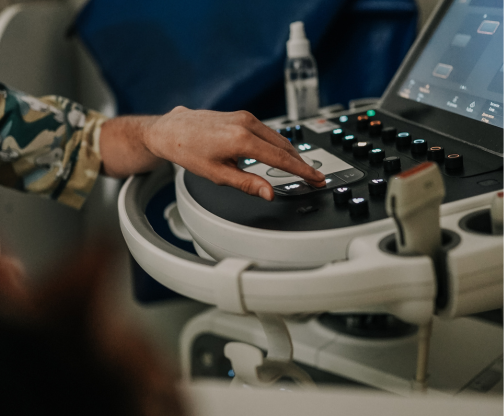
Preparation for ultrasound examination (ultrasound)
It is important to remember that proper preparation of the animal can significantly facilitate the abdominal ultrasound process. By performing this procedure, the doctor can detect possible problems in time and provide proper treatment. High-tech ultrasound is one of the ways to quickly and informatively diagnose and ensure a long and healthy life for our pets.

Brachycephalic syndrome in dogs and cats.
What exactly is brachycephalic syndrome and how to live with it, how to prevent complications for the body that this syndrome can lead to?
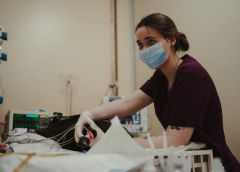
WHY ARE DOCTORS NOT ALL-POWERFUL?
A good doctor is worth its weight in gold. Everyone understands this and can spend years looking for the best one, and when they find one, they will expect miracles.

Allergy
Allergy
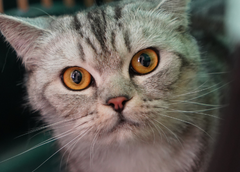
SYNDROME OF TIRED TANKLES IN CATS
Tired antennae of a cat or What do you know about fatigue?

Bacterial myocarditis
This disease is extremely rare in dogs. In cats, it is even less common - 0.006-0.018% of cases.
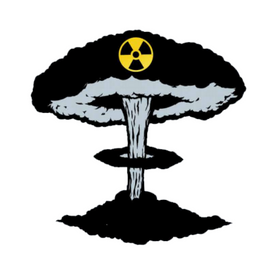
How to protect home lovers from radiation damage.
In recent days, we have received many calls asking for advice on the need to protect animals during a possible radiation exposure.
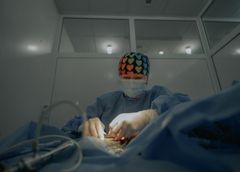
STERILIZATION AND CASTRATION OF CATS AND DOGS
Such operations do not affect the change of the animal's character. They can be done from an early age, in particular from 8 weeks. Convenience, first of all for the animal, is that the young organism has the ability

Side effects of antiparasitic drugs
The need for tick and flea treatments for pets is a well-known fact.

How you can help calm cats and reduce stress today
the head of the felinology department, tells us.

